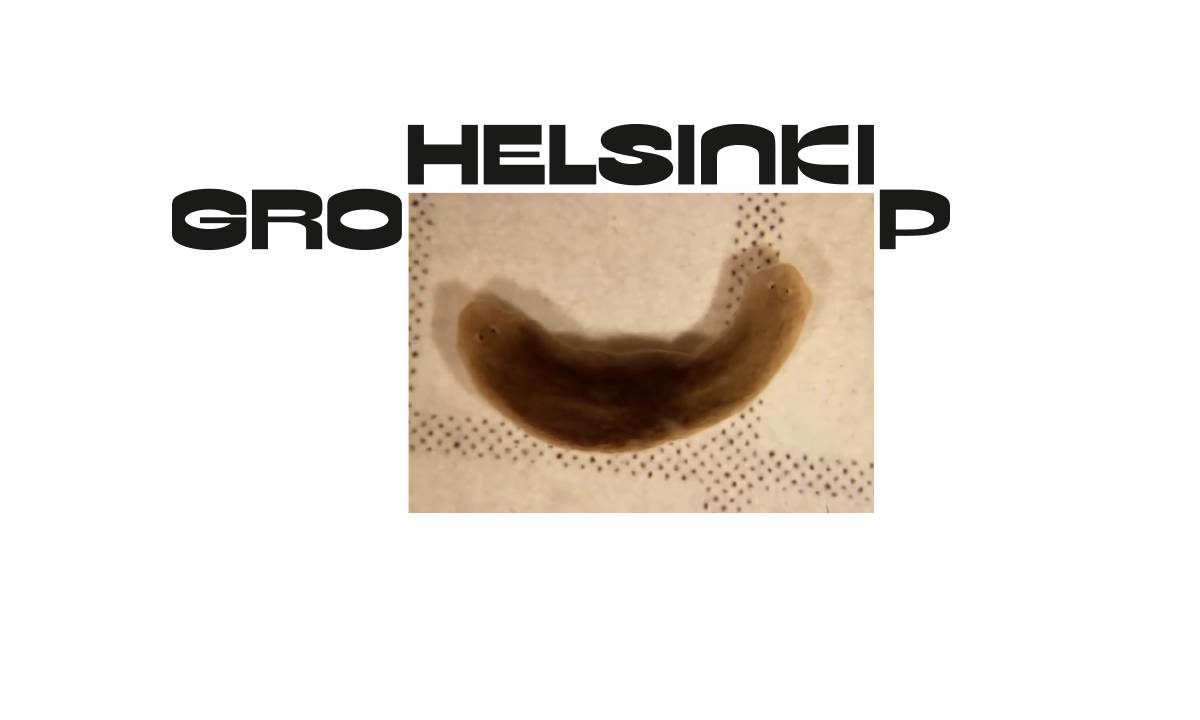3 Dec 2018
Events
HELSINKI GROUP
Opening reception: Friday, November 27, 5–7 PM
Saturday, November 28, 12–5 PM
‘If I were an artwork I would remind you thinking me.’
Cut. Trigger limb growth. Regenerate.
‘Some of our memories are stored outside our brain,’ Jokūbas continues in the middle of the party.
Someone expresses a smile or two, mixed with mild scepticism.
The appearance of two-faced Janus.
Jokūbas answers that this is a scientific fact. Rosalind politely giggles.
Cut.
Gabriel is rapping in another room in at least three languages I can’t understand.
Close-up.
Jokūbas feels he needs to explain. He says he is sceptical to a certain degree as well but it’s only to our benefit to explore these things.
A flashback. Close up. Or a zoom.
If you google you will learn about some memory experiments with Planaria flatworms – biologists have found that flatworms store memory outside their brains and, if their heads are removed, flatworms can apparently imprint these memories on their new brains during regeneration.1
Long shot.
‘It’s such a genius, simple idea for an experiment, only a five year old lying on her stomach in the garden could of thought of it – if you want to know whether memory is stored in the brain, cut off a worms head, wait for it to grow back, then see if it remembers stuff from before,’ Rosalind replies. Then she adds: ‘but if they can find out how worms grow a new head – that’d be something.’
Cut.
Scientist also learnt how to grow two heads on a Planaria flatworm. The appearance of two headed Planaria.
Cut.
Someone leaves the party, gets lost and can’t remember the way back. A window shatters into pieces. Some say it was broken by an elbow, others say it was broken by a head. The head does not remember it. Later the head can’t fall asleep. It asks if there is a slight chance that art may be thought of as a certain ‘memory outside brain’ phenomenon.
Trigger limb growth. Regenerate.
‘Hey, let’s be fair – the memory is both in the brain and outside it. About until 16-17th century, everyone thought memory was stored in a heart, right?’’
Jamais vu.
After a short pause Jokūbas adds: ‘If I were an artwork I would remind you thinking me.’
––––––––––––––––––––––––––––––––––––––––––––––––––––––––––––––––––––––––––––––––
1 http://phys.org/news/2013-08-flatworms-memories-brain.html#jCp or http://www.theverge.com/2015/3/18/8225321/memory-research-flatworm-cannibalism-james-mcconnell-michael-levin or http://www.slate.com/articles/health_and_science/new_scientist/2014/06/regrow_body_parts_bioelectricity_to_regenerate_limbs_in_frogs_worms_and.html
‘HELSINKI GROUP’ is a collective of works that may be seen as memories stored outside the brain. Or a group exhibition that explores the idea of an exhibition as a vehicle for social imagination. Imagine it as a hybrid genre of a travelling show in a suitcase and a cabinet of curiosities. Also it may be seen as a library of objects, a book written in real time, an assemblage, consisting of choreographed objects, space for potentialities; it may function as a ghostly vehicle, both figuratively and literary, for an audience, artists, art objects, and imaging.
Previous iterations include “A Cab or An Ex-libris for a library not yet begun” at Podium, Oslo, and “A Cab. Athenian Symposium” in Kunsthalle Athena, Athens, in 2014.
With contributions by: The Baltish Notebooks of Anthony Blunt, Kaspars Groshevs, Morten Norbye Halvorsen, Pakui Hardware, Laura Kaminskaitė, Eglė Kulbokaitė and Dorota Gaweda, Mikko Kuorinki, Jaana Laakkonen, Nicholas Matranga, Kimmo Modig, Elena Narbutaitė, Jaakko Pallasvuo, Carl Palm, Dexter Sinister, Ola Vasiljeva and others.
Curator: Valentinas Klimašauskas
Organised by Baltic Notebooks of Anthony Blunt, Vilnius and Ruler, Helsinki in co-operation with HIAP.
Supported by Lithuanian Council for Culture

